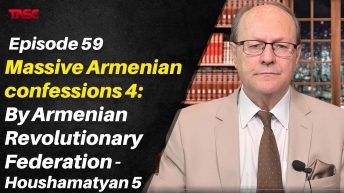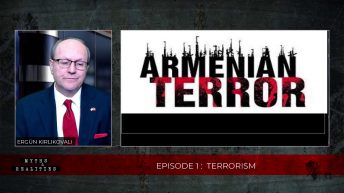Albert Einstein says: “Any fool can know. The point is to understand.” When it comes to the Turkish-Armenian conflict, everyone seems to know all there is to know, whereas all they know is what the Armenian and Armenophile writers tell them. And they never tell the other side of the story. So, one never knows about the Armenian rebellions, systematic terrorism, supreme treason, territorial demands, and the resulting Turkish suffering at the hands of Armenian revolutionaries.
One is told Armenians were victimized by a genocide, but one is never told that it was a temporary resettlement, or TERESET for short, until after the war, that went awry. My intention is not at all to minimize the massive Armenian suffering, but to remind you that it cannot be viewed as separate from the Muslim suffering, mostly Turkish, that took place in the same era and area. Most of the deaths were neither intended, nor due to bullets. The losses were mostly due to insufficient resources, rugged terrain, wartime conditions involving epidemics, starvation, and lastly raids by Kurdish, Arab, and Circassian gangs bent on revenge for the previous massacres the Armenian revolutionaries had committed in defenseless Muslim villages.
Yet, Armenian dead are grieved, but Muslim dead are dismissed out of sheer prejudice. Numerous books have been published on the Armenians and Turks, and the role of the Great Powers, such as Britain, France, and Russia, as well as American Protestant Missionaries, and Western Media coverage of World War One. But most of them have been written by Armenians or Armenophils with extreme prejudice. Very few works, published outside Turkey, have taken the trouble to research the massive Turkish archives or understand the Turkish version of these relation. Esat Uras, the doyen of historians specializing on the Turkish-Armenian relations, informs us that Armenian history is an intermingling of myths, legends, tales, and religious beliefs. He states: “…Some of these (Armenian) contemporary authors, taking advantage of the lack of information in the West about the region, produced works about Armenia, written solely for the purpose of spreading propaganda.” Kamuran Gurun, one of the leading historical researchers in the generation that followed Esat Uras and a diplomat, writes: “…Early Armenian historians…write that Armenians are the descendants of Prophet Noah, and because they accept that Noah’s Ark came to rest on Mount Ararat, they claim to have occupied this region throughout history….
If one wants to base understanding of history on… mythology…(then) one must assume likewise that the Turkish people also increased in the vicinity of Mount Ararat…” Armenians forget that there have always been other people who also lived in the same geography and most of them were more numerous than the Armenians. Armenians like to claim as theirs wherever they set foot with no respect or consideration for other people sharing the same geography. Armenians existed as small principalities under the rule of other powers or empires. Armenians lived under the rule of Persians, Romans, Byzantines, Arabs, Seljuk Turks, Mongolians, Ottoman Turks, and Russians. Turks and Armenians have lived in peaceful co-habitation for nearly a millennium. The conflict we hear so much about recently refers to the events of the last 160 years. So, what happened that destroyed the peace of many centuries between the Turks and Armenians? There were many uprisings in Anatolia since the first one in Zeitun in 1862. After unsuccessful revolts in 1895 and 1909, the revolutionaries’ chance came in 1914, when Russia went to war with the Ottoman Empire. Armenian rebellions again broke out all over the empire. The city of Van was captured by the Armenian rebels in April 1915, many Moslems killed, and the city was turned over to the invading Russian army.
Because of this supreme treason, the Ottoman government decided that it could no longer trust the Armenians. Orders went out to relocate all Armenians from warzones in Eastern Anatolia. The Ottomans, were fighting a Russian invasion in the East and great Allied armada at Dardanelles in the West, spared few soldiers to defend the columns of Armenian refugees moving to Syria. Many Armenians were robbed and killed by Kurdish tribes or some corrupt officials. Simultaneously, twice as many Moslems as Armenians were forced from their homes because of attacks by Russian soldiers and Armenian guerrillas in the Caucasus. Cities such as Erzincan were left in ruins, with Turkish bodies filling the streets. The events of World War I in Turkey were seen in the West only through the eyes of American missionaries and Armenian propagandists.




Add comment